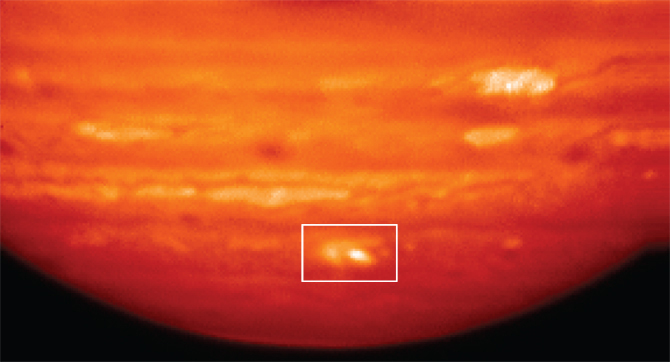New evidence that asteroid, not comet, struck Jupiter in 2009

On July 19, 2009, amateur astronomer Anthony Wesley discovered a dark spot near Jupiter’s south pole, which he attributed to an impact on the planet. Three days later, astronomers Imke de Pater of the University of California, Berkeley, and Heidi B. Hammel of the Space Science Institute in Boulder, Colo., and AURA in Washington, D.C., used the Gemini North telescope in Hawaii to obtain this infrared image of Jupiter showing the impact site glowing at the thermal wavelength of 9.7 microns. White colors indicate the highest temperatures, as well as the presence of hot ammonia upwelling from deep in Jupiter’s atmosphere.
Infrared images like this have been combined with observations that study different colors of light (and hence different materials in the impact debris) from the Gemini South telescope and the VLT (Very Large Telescope) in Chile taken by Glenn Orton of NASA’s Jet Propulsion Laboratory and Leigh Fletcher of Oxford University in the UK. Together, the information strongly suggests that a rocky body – likely an asteroid and not a comet – slammed into the jovian atmosphere in 2009, unlike the comet that pummeled Jupiter in 1994.
For More Information:
Read the press release from the Jet Propulsion Laboratory in Pasadena, Calif.
